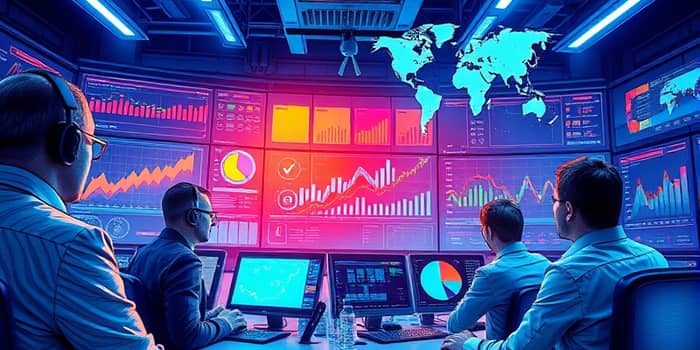
Enterprise Risk Management (ERM) has evolved into an essential framework that empowers organizations to navigate uncertainties with confidence. In today s fast-paced business environment, companies face a myriad of threats—from regulatory changes to geopolitical tensions—and ERM provides a structured path forward.
By integrating risk practices across departments, ERM ensures that every decision is informed by a clear understanding of potential pitfalls and opportunities. This article delves into why ERM matters, the core benefits it delivers, and how businesses can overcome common implementation challenges to achieve long-term resilience.
ERM is a holistic approach to identifying, assessing, and managing risks across an entire organization. Unlike traditional, siloed methods, ERM offers a unified view of risks—strategic, operational, and financial—ensuring that leadership teams have actionable insights at their fingertips.
This integrated methodology breaks down barriers between departments, promoting collaboration and shared responsibility. By embedding risk awareness at every level, companies cultivate a proactive mindset that anticipates threats before they materialize, rather than reacting after disruptions occur.
Moreover, ERM supports regulatory compliance by systematizing how legal requirements are tracked and met. Organizations with mature ERM frameworks often experience fewer audits, reduced penalties, and a stronger reputation in the marketplace.
Implementing an ERM framework transforms risk from a mere compliance exercise into a strategic asset. When leadership gains a unified view of risks, decisions become more informed and agile. Here are the most impactful benefits:
Improved decision-making is one of the most cited advantages. By obtaining a fuller picture of their risk landscape, executives can weigh potential threats and rewards side by side. In fact, 57% of risk professionals report that technology-supported risk management yields better quality decisions, enabling organizations to pursue opportunities with confidence.
Regulatory compliance is another critical area. A systematic ERM process ensures that legal requirements are tracked, documented, and met proactively, minimizing costly sanctions or reputational setbacks. Firms with robust compliance protocols often face fewer audits and penalties.
Operational efficiency and resilience also improve markedly. Companies with mature ERM practices allocate resources more effectively, streamline reporting, and respond swiftly to disruptions—whether they be supply chain failures or global crises. In the past year, 41% of organizations experienced three or more critical risk events, underscoring the need for resilience.
Strategic growth is no longer a gamble when risk insights drive market entry and innovation decisions. ERM shifts organizations from reactive to proactive, supporting product launches, acquisitions, and long-term sustainability. This fosters a competitive advantage in dynamic markets.
Finally, ERM nurtures a risk-aware culture. By promoting shared responsibility, it enhances morale, ensures accountability, and builds stakeholder trust across diverse audiences, from investors to customers. Predictable operations and reduced cash flow volatility further bolster financial performance.
ERM frameworks typically encompass a wide spectrum of risks:
Despite its clear advantages, establishing an ERM program often encounters roadblocks. Common hurdles include insufficient executive buy-in, limited resources, and outdated technology. Without strong leadership support, ERM initiatives can stall or fail to deliver promised results.
Addressing these challenges requires a structured approach: secure top-level sponsorship, invest in user-friendly tools, and cultivate risk expertise through training. Regular communication and alignment between departments also ensure that ERM remains integrated rather than an isolated function.
The risk landscape is more complex than ever. Senior leaders report that 65% of risks have changed “mostly” or “extensively” in the last five years, driven by geopolitical tensions, cybersecurity threats, and supply chain volatility.
These figures highlight both the urgency and opportunity for businesses to adopt comprehensive ERM strategies that align with modern challenges.
Looking ahead, ERM will increasingly leverage artificial intelligence, data analytics, and real-time monitoring. Predictive risk modeling will enable companies to anticipate threats before they materialize, while continuous scenario planning fosters agility.
Boards and CFOs are pushing for integrated risk dashboards that pull data from finance, operations, and strategy in one place. This trend will further break down silos and create a single source of truth for enterprise risk.
Moreover, as environmental, social, and governance (ESG) factors gain prominence, ERM frameworks will expand to include sustainability and ethical considerations, ensuring businesses remain resilient in a rapidly changing world.
ERM is far more than a compliance tool—it is a strategic enabler for long-term success. By adopting a holistic, proactive approach to risk, organizations enhance decision-making, strengthen resilience, and seize growth opportunities with greater confidence.
In an era defined by uncertainty, a robust ERM program offers the clarity and agility that businesses need to navigate turbulence. The time to invest in enterprise risk management is now, as its benefits will resonate across every level of your organization and position you for sustained competitive advantage.
References













